Drones could create 100,000 jobs in M’sia by 2030, here’s how you can take part
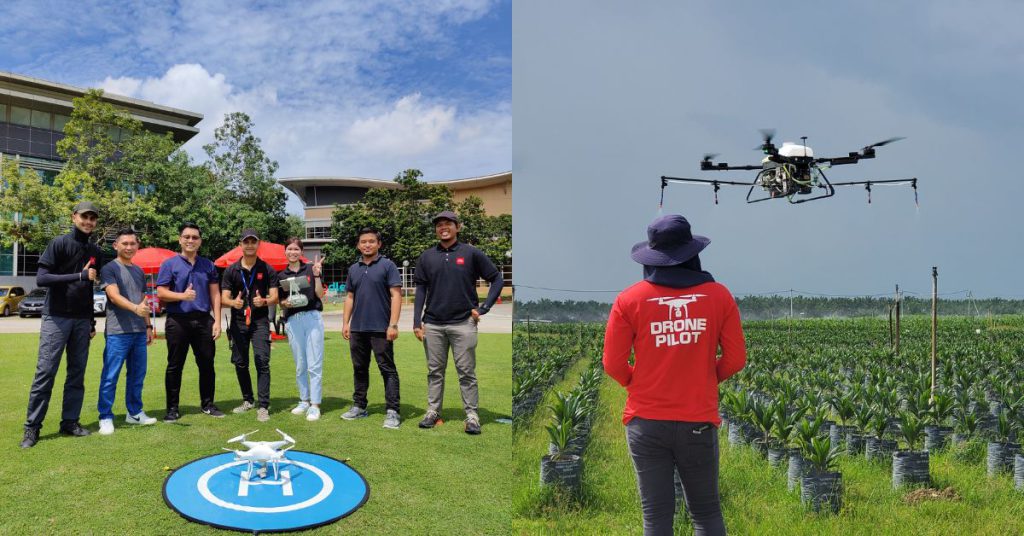
[This is a sponsored article with MRANTI.]
There was a time when drones were viewed as a toy or just a cool gadget. They were used by photographers and videographers to showcase their creativity through stunning overhead shots.
Later finding their way into more industries, unmanned aerial vehicles (UAVs) are today commonly used to improve workflows in agriculture, construction, security, surveillance, as well as search and rescue.
Drone technology (dronetech) is a booming industry within Malaysia alone, which is why it is expected to contribute RM50.71 billion to the country’s GDP and create 100,000 high-value job opportunities by 2030.
And no, those jobs aren’t just for pilots and engineers.
To get us there, the government rolled out a national action plan, called the Malaysia Drone Technology Action Plan 2022-2030 (MDTAP30).
Malaysian Research Accelerator for Technology and Innovation (MRANTI) was appointed by the Ministry of Technology, Science, and Innovation (MOSTI) to lead the agenda.
If you’re hoping to take part in the dronetech industry, here are several leading Malaysian dronetech companies with job openings and drone-related training opportunities.
Hint, hint: The first two names on this list have also been ranked in the world’s top 20 in the Drone Services Providers Ranking 2022.
Drone companies
1. Aerodyne Group (Aerodyne)
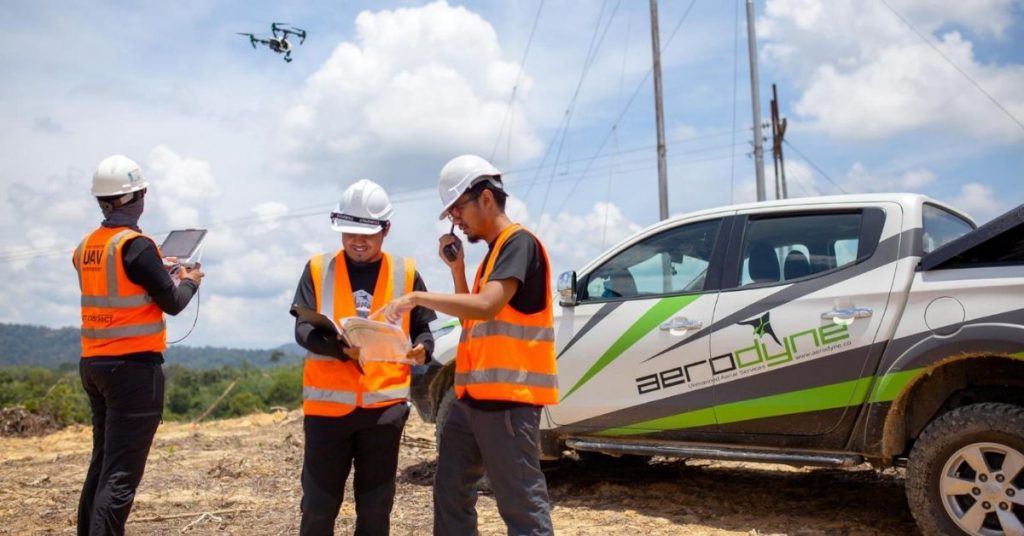
Coming in number one on this list and in the Drone Services Providers Ranking 2022, Aerodyne initially started as a media production company that also used drones in their services. Later on, Aerodyne transitioned into a drone services company, and the drones were even used to provide assistance for flood relief efforts.
As the startup grew, the team expanded to providing services in agritech, construction, logistics, and more, where the use of drones and data technology helped to make asset inspection and monitoring more efficient, faster, and safer.
Aerodyne has been working with MRANTI for a while now, and they were part of the launch of Area 57 in August 2021. Briefly, Area 57 is the one-stop centre for dronetech innovation in Malaysia, and this was where Aerodyne debuted their first BVLOS flight demo to MOSTI.
Did you know: BVLOS (Beyond Visual Line of Sight) refers to the operation of UAVs and drones at distances outside the normal visible range of the pilot. This enables a drone to cover far greater distances.
Headquartered in Cyberjaya, Aerodyne is now in 44 countries globally, including Australia, the US, UAE, India, Japan, Kazakhstan, and Indonesia.
More than having the technical know-how for the job, Aerodyne’s employees (also known as AeroRangers) are valued for their soft skills which include leadership, communication, teamwork, adaptability, and problem-solving abilities.
Candidates who can display these qualities may have a high chance of fitting in with the company’s culture. Those who are curious and up-to-date about the industry are also appreciated.
Aerodyne’s open vacancies include:
- Lead Game/Digital Twin Developer
- Manager in Group Management Reporting
- Senior Executive, Group Treasury
- Manager in Governance, Risk and Compliance
- Internships
Check them out here.
2. Meraque
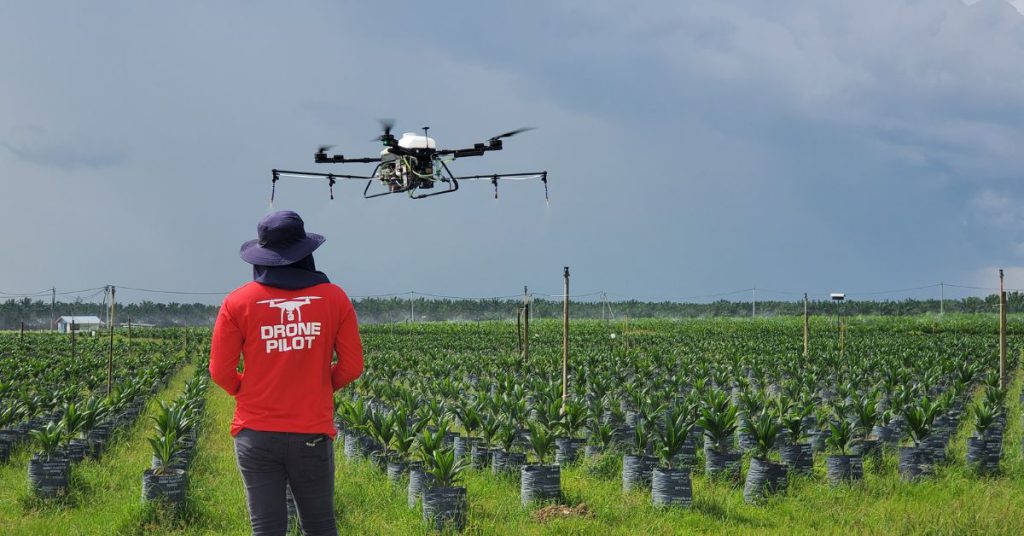
Meraque started in 2017 as a UAV operator in Facilities Management Building Services. They’ve since ventured into agriculture, telecommunications, entertainment, and logistics.
The team’s involvement with MRANTI was seen during 2022’s flood relief efforts, where Meraque’s drones were used for surveillance, and for delivering critical medical supplies via Pharmaniaga.
Meraque also made it on the Drone Services Providers Ranking 2022, as a top 20 drone company.
Located in Puchong, Meraque’s office is a place where employees are trusted to have ownership over their work.
With an aim to continuously enhance their products and services, as a candidate, you’d have an edge if you collaborate well in a team, and are passionate about your work.
Meraque’s open vacancies include:
- Data Analyst
- Product Design
- Junior CAD Drawing
- Drone Pilot
- Corporate Communications Intern
- Networking System (IT)
- Drone Engineer
- Mechanical Engineer Intern
Check them out here.
3. MALVUS Sense (MALVUS)
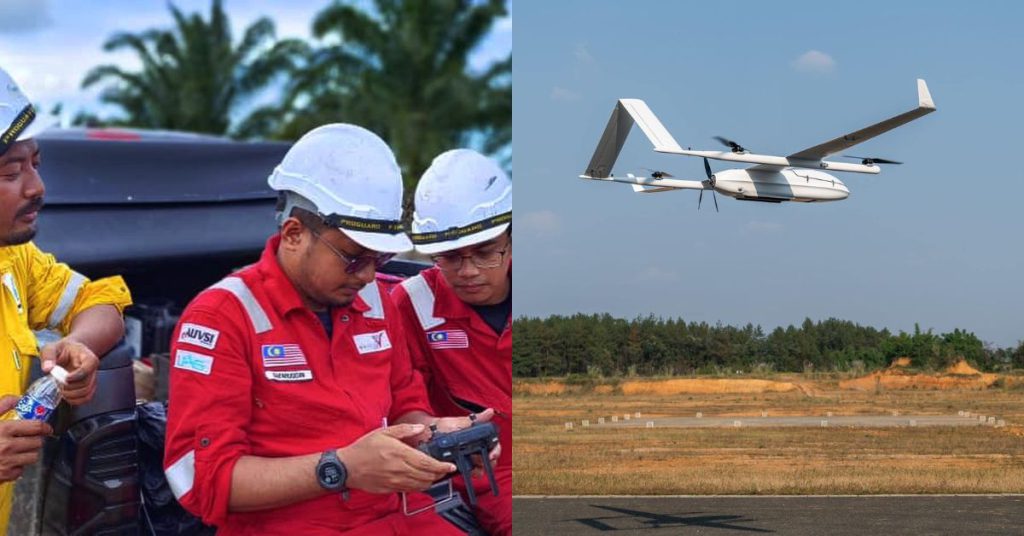
MALVUS, abbreviated from ‘Malaysia Vision Unmanned System’, was incorporated in September 2016. Headquartered in Bangi, they have offices in Miri and Kota Kinabalu too.
Providing services in aerial patrolling, structural integrity inspection, and precision agriculture, MALVUS’s clientele includes TNB and Petronas, to name a few.
They also work in plenty of data-based operations such as acquisition and analytics, drone assembly and maintenance, along with drone pilot training.
In terms of the company’s values, MALVUS’s team believes that qualifications aren’t the only prerequisite for scoring a job there. Instead, they look for candidates who are driven by success, and are resourceful.
MALVUS’s open vacancies include:
- Field Surveyor
- Geographic Information System (GIS) Analyst
- Junior Geologist
- Integrity Engineer
- Finance Executive
- Business Development Executive
Check them out here.
Drone training centres
4. Drone Academy Asia
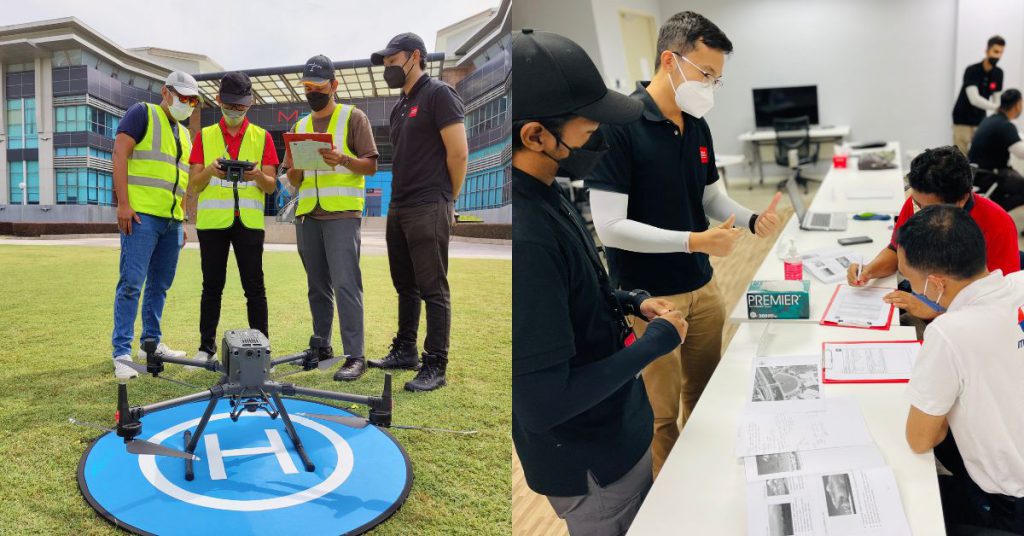
Based in Cyberjaya, Drone Academy Asia was founded in 2018, when the team noticed that the bulk of drone usage in Malaysia was skewed towards aerial photography and hobbyists.
At the time, there wasn’t yet a local centre for professional UAV training to upskill workers in using drones for commercial functions.
Hence, Drone Academy Asia came in to fill that gap by providing drone piloting certification that’s approved by the Civil Aviation Authority of Malaysia (CAAM).
The desire to upskill is a highly valued trait in anyone who wishes to join the Drone Academy Asia team.
Drone Academy Asia’s open vacancies include:
- Drone Instructor
- Drone Education Sales Executive
- Digital Marketing Coordinator
- Marketing Intern
Check them out here.
5. Aeronerve Institute
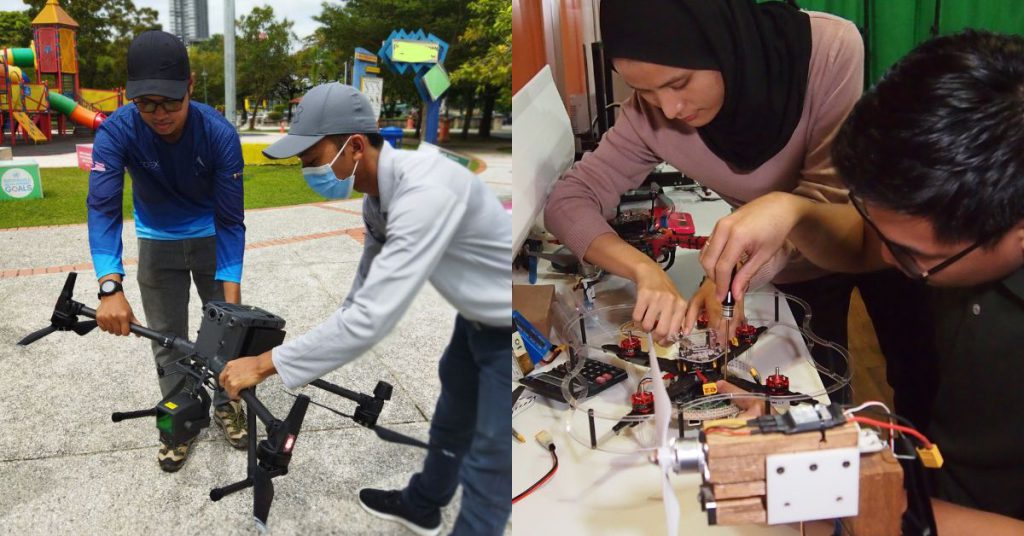
Located in Bangi, Aeronerve was founded in 2018 to provide UAV solutions in construction, agriculture, surveillance, and defence.
Much like Drone Academy Asia, Aeronerve’s team also realised that there was a gap in the workforce’s know-how in operating commercial drones.
Hence, Aeronerve Institute was rolled out in 2022 as the drone training and consultancy arm under Aeronerve.
To date, the institute shared that they have provided training to more than 3,000 candidates, including government officials, researchers, private drone fleet crews, and individuals looking to upskill.
As educators and instructors themselves, they are looking for team members who are capable of training others, and able to foster a culture of collaboration within the company.
Aeronerve Institute’s open vacancies include:
- STEM Educator-cum-Drone Instructor
- Digital Marketing Executive
- Business Development Executive
Check them out here.
6. Bonus: Asia Drone IoT Technologies (Asia Drone)
Note: They’re not currently hiring, but this is a drone company to keep your eye on for future vacancies.
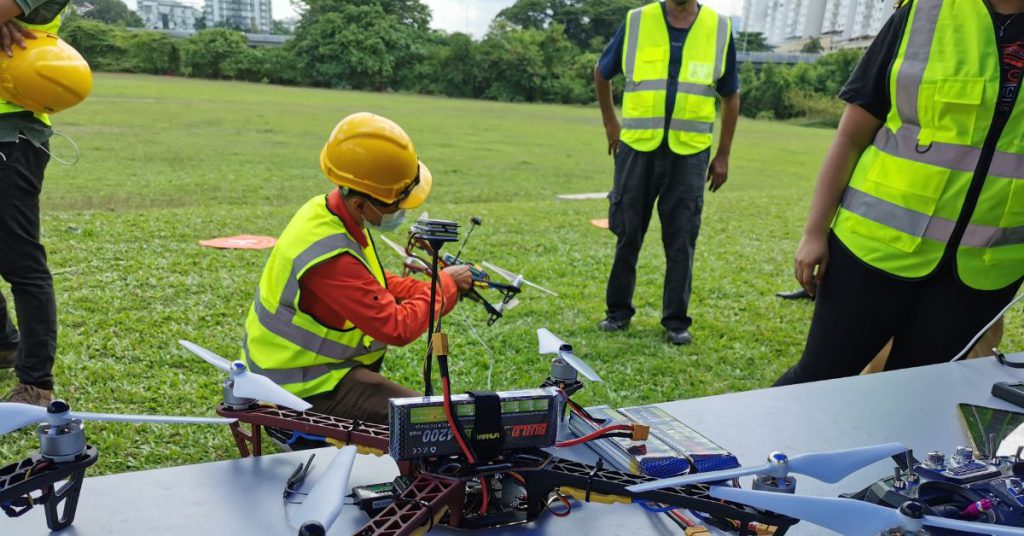
Established in 2018, Asia Drone stated that they’ve trained over 1,000 remote pilots in UAV operations such as aerial mapping and surveying, precision agriculture, as well as maintenance and repair.
As a drone training centre in KL and Johor, Asia Drone offers programmes to nurture local talents and help them find jobs within the industry.
They’re looking to upskill participants with a technical or vocational background, or even retrenched workers from sectors like oil and gas, aviation, and IT and software.
Furthermore, graduates of their programmes (Dronetroopers), may be given job opportunities within the company and partnering ones, should vacancies open up.
When it comes to working at Asia Drone, team members are required to be creative and critical, and have the ability to socialise. This is because if they’re hired as instructors, they must be skilled at engaging with students.
You can keep a lookout for job openings here.
-//-
A large misconception about working in the drone industry is that it only involves those who know how to operate a UAV, such as pilots, engineers, and the like.
In reality, though, drone operation constitutes just 20% of the whole project workflow, with the remaining 80% composed of skills related to data processing, analysis, and other backend work. That’s according to Aeronerve Institute’s CEO, Nizzal Syafiq.
Other than the companies we’ve highlighted, there are more opportunities for those who wish to actively participate in UAV training and dronetech job openings. These can be found by getting directly in touch with MRANTI via area57@mranti.my.
Area 57 is also a host to drone training providers like DJI Academy Selangor, Archidrone, and TDXC, which uses the area for practical drone flying operations within the designated areas.
Also Read: 6 ways to manage and protect your precious banking access from online hacks or scams
Featured Image Credit: Drone Academy Asia / Meraque
RIP metaverse: The digital hype is dying down, partly thanks to Zuckerberg’s ‘Meta flop’
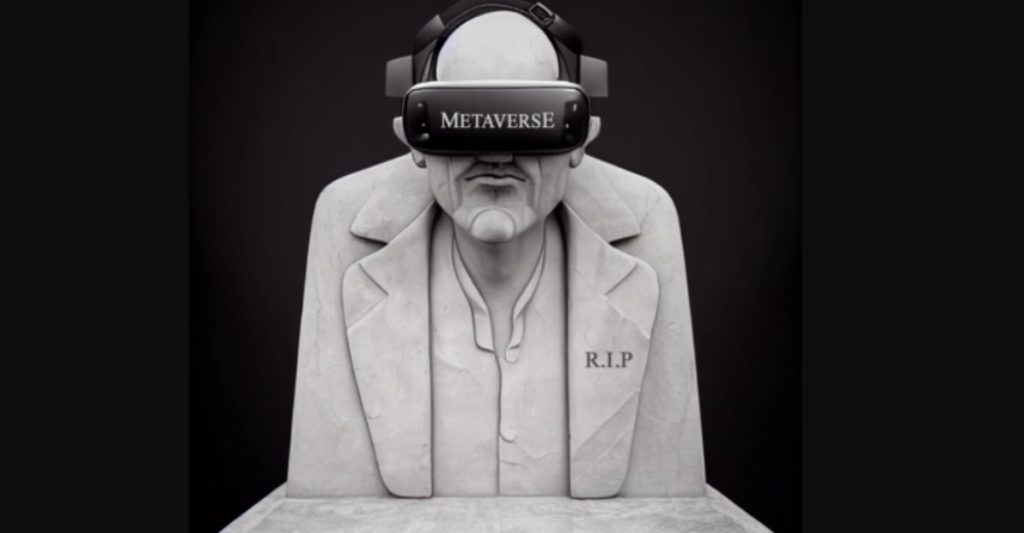
“The next chapter of the Internet.”
“The successor to the mobile Internet.”
“It will have the ability to support many, many millions of jobs.”
“You will be able to teleport instantly as a hologram to be at the office without a commute, at a concert with friends, or in your parents’ living room to catch up.”
These are the many unrealistic dreams Meta CEO Mark Zuckerberg has for the metaverse but can these dreams actually be realised?
Back in October 2021, Facebook rebranded into Meta to reflect its expanding ambitions to conquer the metaverse.
But looking at how its virtual platform Horizon Worlds is failing to retain users — with only one in 10 returning to the virtual platform after a month — it’s hard to see how Zuckerberg can manage to transform the world with the highly-raved tech.
Since Meta’s rebranding, interest in the metaverse has also progressively dwindled. Nobody is really interested in the metaverse anymore, especially after the rise of artificial intelligence (AI). In fact, search traffic for the word ‘metaverse’ globally has declined by about 80 per cent over the past year.
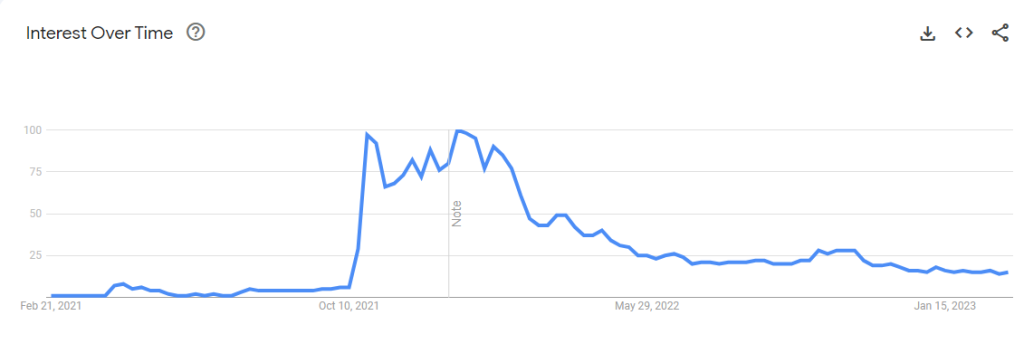
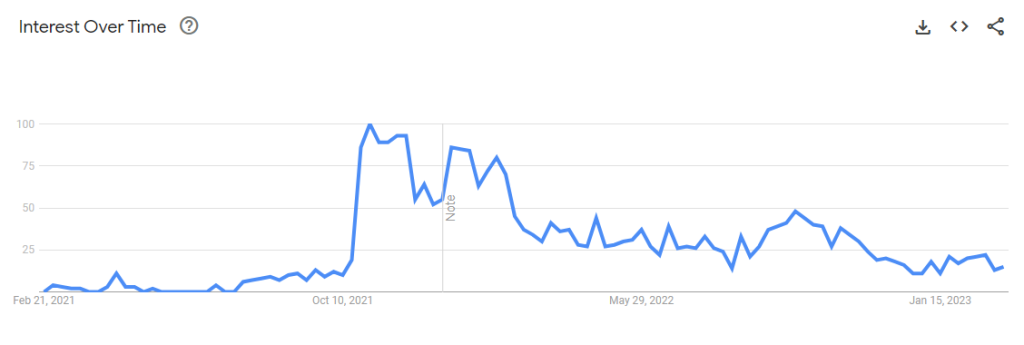
The declining interest in the metaverse is evident among Singaporeans as well, with the interest in the metaverse reaching its peak around the time Meta announced its rebrand, before steadily falling.
Mark Zuckerberg quietly buried the metaverse

Be that as it may, it’s not to say that Zuckerberg did not put in any effort into developing the metaverse. Meta has poured billions into the development and creation of the metaverse since 2021, headstrong on pushing it out for global adoption in a decade or so.
In 2022, the company’s VR and AR division Reality Labs generated a revenue of almost US$2.2 billion, crowning Meta as one of the biggest metaverse players globally.
While this may seem like an accomplishment, Reality Labs actually generated an operating loss of US$13.7 billion at the same time, which means that the company is spending way more money than it’s making.
This amount is in addition to an operating loss of US$10.2 billion for Reality Labs in 2021, which adds up to a two-year operating loss of US$23.9 billion. During this timeframe, Meta has generated metaverse-related revenue of just US$4.4 billion.
What makes this worse is that Meta’s Reality Labs isn’t growing. In fact, its revenue had dropped by five per cent in 2022 as compared to the previous year.
The shares of the company had also tanked, falling to the lowest level since 2016 last year, as investors lose confidence in Meta.

Raking in loss after loss, reality finally hit Zuckerberg — the CEO decided to quietly bury the metaverse earlier this month by turning his attention to the next big, shiny thing: AI.
“We’re starting by pulling together a lot of the teams working on generative AI across the company into one group focused on building delightful experiences around this technology into all of our different products,” Zuckerberg wrote on Facebook, essentially giving up on his metaverse dreams.
But what even is the metaverse?

Zuckerberg was hellbent on making the metaverse work, but funnily enough, nobody truly knows what the metaverse is.
The idea of the metaverse is still so nascent that people are still trying to figure out how to define the virtual platform — which was exactly why Zuckerberg’s dream of realising the metaverse was doomed to fail.
Even Google can’t help. Googling the term ‘metaverse’ brings you several distinct definitions of the metaverse — so which one of these is the “correct” definition of the metaverse?
That said, the general consensus around the metaverse is that the virtual platform would have two important characteristics. Firstly, it is an interconnected digital space which allows people to have life-like interactions, be it personal or professional.
Secondly, the digital space that the metaverse provides must be immersive, pushing technology to beyond what it is today, usually in the form of a 3D-enabled space to add a touch of realism in the space. To create this immersion, physical tools such as VR headsets and goggles can aid in substituting a user’s real senses.

Eventually, the endgame for the metaverse is for virtual worlds to exist seamlessly alongside the real world.
An all-encompassing, immersive metaverse is still a faraway target

Despite the decades spent into developing the metaverse, the hardware and software needed to run the digital space at its intended scale is still far from finished.
Tommaso Di Bartolo, a faculty member at UC Berkeley, believes that an all-encompassing, immersive metaverse is still a faraway target. This is because it would require a combination of “5G, AI, next-gen processors, Quantum Computing, Edge Computing, AR, and VR, but as of right now, however, these technologies are not advanced enough to scale en masse at an affordable price”.
VR devices in the market today are lacking in many aspects, and are far from being able to provide a truly immersive experience.
Although recent developments such as facial and body movement tracking are providing users with a better experience, these devices still cannot replicate basic aspects of the human experience, such as physical touch.
Even the graphics in Meta’s Horizon Worlds has gotten flak from users for looking too simplistic when virtual reality games such as Second Life can provide its users with better graphics, despite being launched years before Zuckerberg decided to focus on developing the metaverse. Not to mention, even Meta’s own employees are reportedly not utilising Horizon Worlds.
Besides these issues, the metaverse also currently lacks interoperability between different metaverse platforms, an essential component to creating a fully immersive virtual experience.
By establishing a commonly accepted set of standards, we can create bridges between various creators and users in the metaverse, but sadly, efforts towards interoperability in the metaverse are still in infancy stages.
The metaverse was overhyped way before its time

Considering that the tech and structural considerations to successfully implement the metaverse feasibly, the hype created surrounding the metaverse these past two years have only set up the concept for failure.
Zuckerberg was at the forefront of this hype, after his announcement of Facebook’s rebranding. The word ‘metaverse’ has been thrown around way too easily the past two years, creating unrealistic hype around the concept.
For instance, during the Meta Connect conference in 2021, Zuckerberg showed off an extravagant what-if video, depicting the possibilities of the metaverse. In the video, two friends attended a Jon Batiste concert together — one in real life, and one through ‘metaverse glasses’ with apparently no difference between their experiences.
But this is far off from the reality we have today.
Zuckerberg is not the only one to blame for creating this overpromising, unrealistic hype. The past two years have seen the likes of Microsoft and Google joining the metaverse race, coming up with their own platforms such as Microsoft Mesh and putting out new AR and VR devices.

Last year, the executive chairman and CEO of Microsoft, Satya Nadella, claimed that the metaverse is already here, “not only transforming how we see the world, but how we participate in it – from the factory floor to the meeting room”.
Big brand names have also been riding the waves of the metaverse hype during this time by incorporating it in their marketing strategies to generate buzz around their products and services.
Inevitably, the hype surrounding the metaverse has built up unattainable expectations within consumers.
So when Zuckerberg and many other metaverse platforms failed to deliver products that match these expectations, users naturally lost interest in the tech, bursting the hype bubble surrounding the metaverse.
For instance, besides Horizon Worlds, popular metaverse platform Decentraland reportedly only has 8,000 users on average per day, according to its creative director Sam Hamilton, while The Sandbox claims that it has 32,000 active users — a far cry from achieving global adoption anytime soon.
Can the metaverse bounce back?

Gartner Inc expects that 25 per cent of people globally would spend at least an hour a day in the metaverse for work, shopping, education, and entertainment by 2026.
However, an overwhelming 46 per cent of industry experts have cast their doubts on the feasibility of the global adoption of the metaverse by 2040, according to a report done by Pew Research Center.
These industry experts believe that the technology needed to implement an immersive metaverse will still not be achievable by that time. Considering the current state of the metaverse, some even believe that the metaverse will not have much use in daily life.
Mark Crowley, an assistant professor of computer engineering at the University of Waterloo said, “The real world is far richer and more important than virtual reality and it always will be. I believe the limiting factor to fully immersive activities will be that they are unnecessary.”
On the flip side, supporters of the metaverse believe that it would provide a new reality for humans — one that can even “improve the physical world for humans”.
That being said, the buzz surrounding the metaverse has been killed off especially after the rise of generative AI. But this doesn’t mean that the concept of the metaverse will fade away forever.
A clear example of this is the decades-old field of AI, which is known for going through multiple winters when people doubted the prospects of the tech. Today, however, AI is definitely disrupting and revolutionising various industries — and this may be the case for the metaverse as well.
Nevertheless, the current state of the metaverse suggests that it is still far from alive.
Featured Image Credit: Louis Rosenberg via MidJourney
Also Read: There is a need for laws to govern the metaverse, and S’pore is already taking steps towards it
This Aussie works with Cameron Highlands farms to grow European veg, here’s her bigger goal
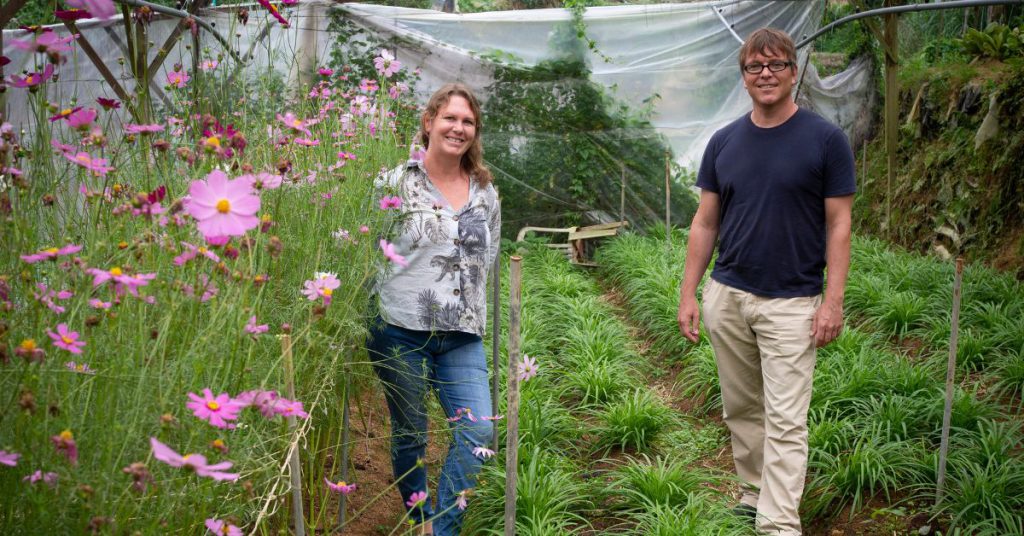
Leisa Tyler grew up on a dairy farm in North West Tasmania. When she was 23, she moved overseas, first to Laos to teach English, then to Thailand where she started writing about food.
In 2005, she joined The World’s 50 Best Restaurants list as the Southeast Asian chair.
So, how did she go from there to finding herself in Malaysia, working with farmers in Cameron Highlands?
A pivotal moment that played a part in this was when Leisa was doing an event with a Thai-cuisine chef, who was also an old friend of hers, in Singapore.
He needed coriander and the restaurant supplies only had coriander from France.
“My friend was irate and refused point blank to use coriander imported from France in a dish in Southeast Asia, where coriander is an integral ingredient,” she shared.
A few weeks after that, Leisa was in a supermarket in Singapore and came across some baby bok choy that was flown in from Australia.

These were watershed moments that made her realise the food chain was, in her own words, essentially broken.
Chefs would order produce from just about anywhere on the globe. A week later, the product would arrive on a jet plane.
“They had no idea who had grown their beetroot, or how,” Leisa expressed. “They had no connection to soil or weather or seasons.”
Not only were the produce expensive, they had an enormous carbon footprint. Meanwhile, farmers in Cameron Highlands, the closest highlands to Singapore, were growing cabbages and barely making enough to get by.
“We needed to join the dots,” Leisa shared. And that she did.
Connecting farmers to chefs
Weeds & More is essentially a farm collective that focuses on growing herbs, vegetables, edible flowers, and garnish leaves for hotels and restaurants in Singapore and Malaysia.
How Leisa sees it is a cross between a supplier and a farm. It doesn’t actually own any farms, but the team contracts farms in Cameron Highlands to grow certain produce—particularly cold climate European vegetables.
It grows heirloom carrots, beetroot, leek, radishes, and many, many, more.

“Local farmers were always capable of growing these crops, but they weren’t growing them,” she explained. “That’s the point.”
For instance, Leisa claimed that Weeds & More were the first farms in Malaysia to grow kale. Now, there are plenty.
Around 2015, Weeds & More became Leisa’s full-time job. As a well-established organisation now, though, she only spends a couple days in a week working on it, as she also has other businesses to attend to, namely Kita Food Festival, which she owns with Malaysian chef Darren Teoh.
Whatever way the seed grows
Weeds & More works with heirloom or open pollinated seeds. Heirloom vegetables refer to varities that have been around for hundreds of years and can thus produce an offspring.
“We use heirloom seed because I don’t believe big agriculture or hybrid seed companies should control the world’s food supply,” she reasoned. “I am also a big believer in biodiversity, both in the plant and animal worlds.”
Research on these seeds, which the team did themselves, took 18 months. The methodology involved putting seeds in the ground and simply seeing what would come up. They trialed varieties to see what would grow in Malaysia’s soil and through the monsoons.
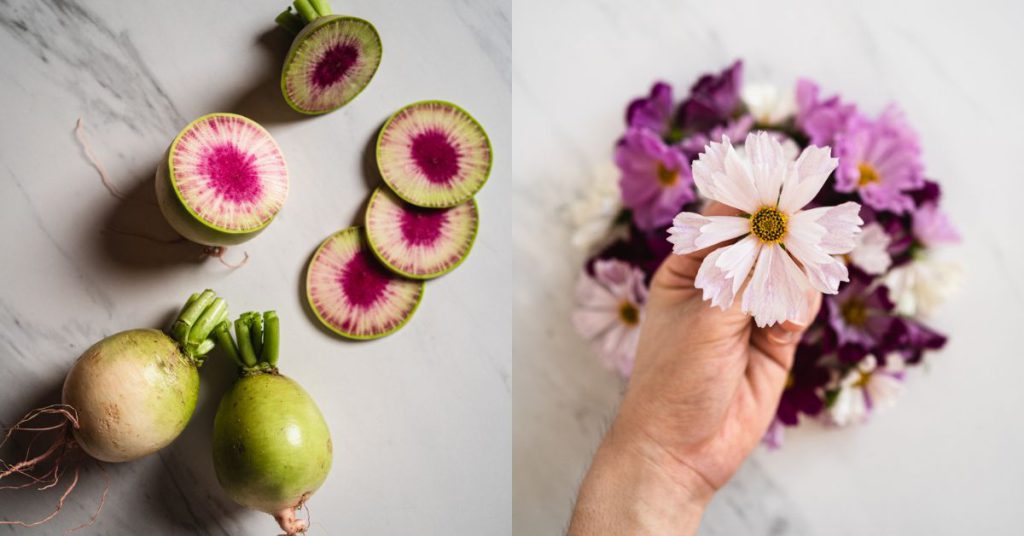
“I paid a farmer, Fung Chee Siang, who has a certified organic farm in Ringlet, a retainer, so there was no pressure for the farm to perform,” Leisa said. “It was just an experiment. We would travel up to Fung’s every two weeks or so to see the plants and see the failures—of which there were many.”
Weeds & More also worked with two chefs in Singapore, David Pynt from Burnt Ends and Anthony Yeoh from now-closed Cocotte, on the harvest and packing.
The two chefs would come up to the farm for parties. The farm staff would tell the chefs about production and working with the weather, and in turn the chefs would cook for the farm staff.

“It was an important part of bridging the gap between the chefs and the producer,” Leisa shared. “Just listen to each other’s problems. It was wonderful.”
Weeds & More started supplying to those chefs, and from there they grew by word of mouth.
Today, it works with four farms to produce around 100 different varieties of crops.
Why European vegetables
So far, Weeds & More has focused on European heirloom vegetables. This is as Leisa knew that was what her chef friends served in their restaurants and therefore Weeds & More would be able to sell it to them.
However, since the start, the long-term goal has always been switching back to native produce.
“I think there is a very strong perception in Malaysia, and Singapore for that matter, that if something is imported from a faraway place then it is better,” she mused.
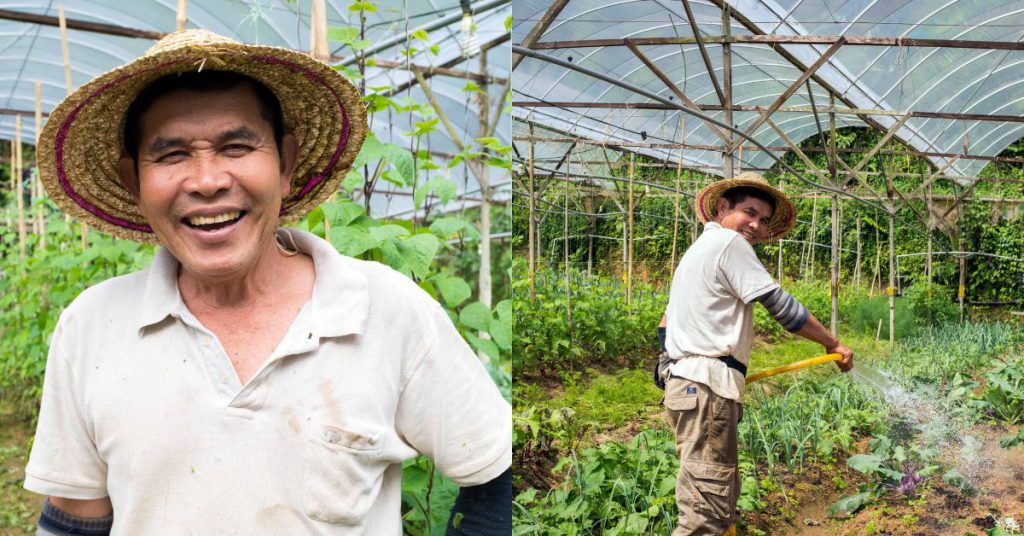
For instance, one of her partner farmers grows Momotaro, a hybrid tomato from Japan. Select supermarkets also sell Momotaro tomatoes, but theirs are usually imported straight from Japan and priced around RM250 per kg, Leisa shared.
But, Leisa shared, her farmer’s Momotaros are better. The farmer imports the seeds, ripens the fruit on the vines, and invests a huge amount of “love and focus” on flavour, she pointed out.
“The results are top-class tomatoes, rich in umami and residual sugar,” she expressed. “But I’d bet you my last dollar that if a supermarket customer was given a choice of the two without any financial restrictions, they would choose the tomatoes that had been air flown in from Osaka.”
Weeds & More to come
Working with farmers in Malaysia, Leisa shared, does have its challenges. Due to poor post-harvest management and packing standards as well as expectations in Malaysia, Leisa shared there is a mindset that it’s fine to send out poor quality boxes.
“We expect high standards,” Leisa said about Weeds & More. “We pay well above the market rate, but with this we expect care and everything to be done correctly. If the willingness is there, if we share common goals and objectives, it’s never too difficult.”
When asked whether she’s concerned about being seen as a “white saviour”, a term that Tatler Asia used in introducing Weeds & More in an article, Leisa shared that our question was the first time she had heard of it.
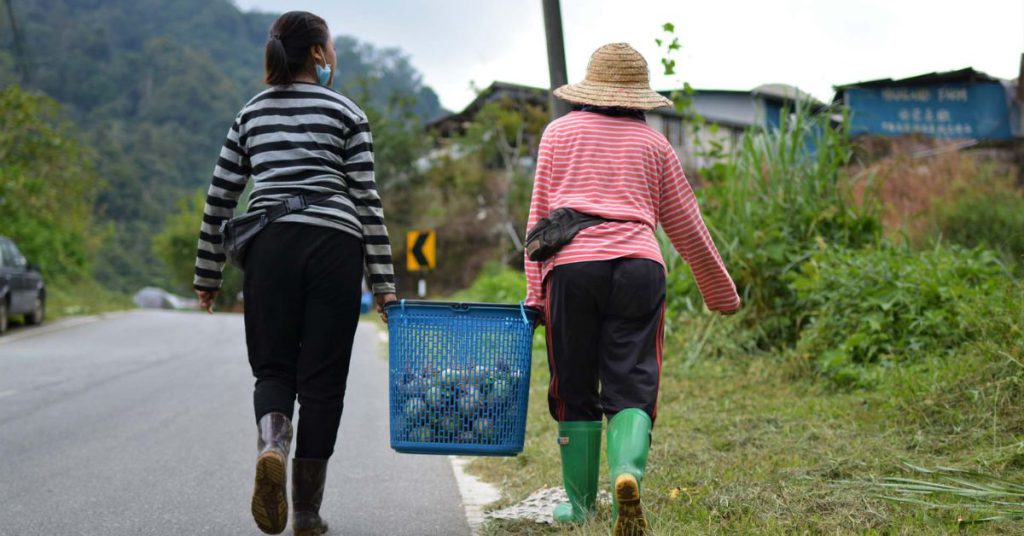
“I don’t know if people consider us like that. I certainly hope not,” she responded. “For me, outsiders always see things differently. Just look at Chinese investments in agriculture in Australia—they know what will be the next big thing because they can see the big picture with fresh eyes.”
With those fresh eyes, Leisa shared that Weeds & More is in discussions with a company in Java to perhaps expand their operations.
“[The] long-term [goal] is to ensure our farmers are happy doing what they are doing, are paid well, that their soil is happy and producing, and that our customer expectations are met and they have all they need from a quality, local source,” she concluded.
- Learn more about Weeds & More here.
- Read other articles we’ve written about Malaysian startups here.
Also Read: ZCOVA expands to offer lab-grown diamonds with a message that “if you want it, then get it”
Featured Image Credit: Weeds & More
This Moroccan missed home so much she launched a skincare brand in M’sia starring argan oil
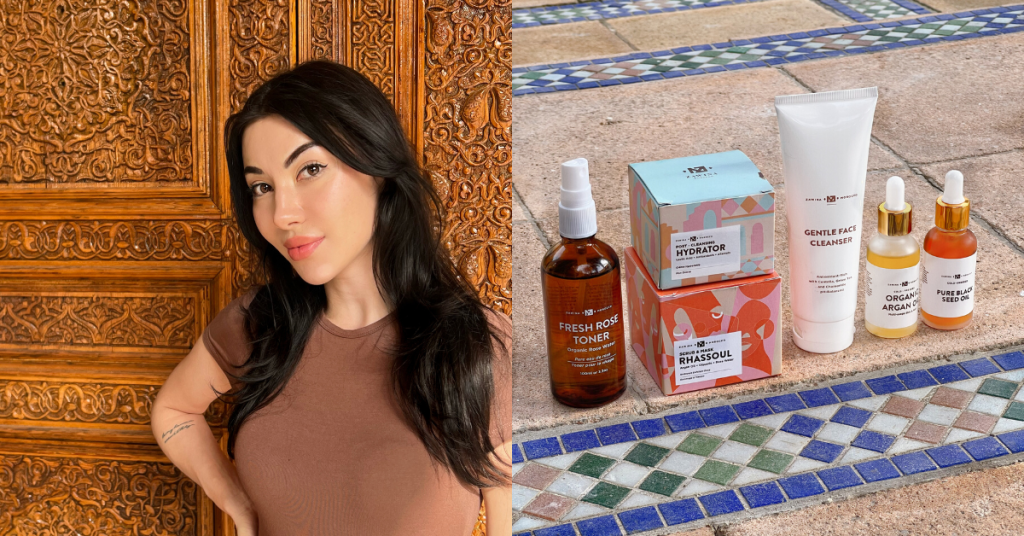
With a melting pot of cultures in Malaysia, we’re no strangers to different beauty rituals, not to mention that popular international beauty practices have found their way into our routines too.
The Chinese drink herbs, the Indians use turmeric face masks, the Malays have flower baths, and the Koreans exfoliate religiously.
But Moroccan beauty rituals are hardly (if ever) part of the conversation here.
Wanting to share her traditions with her new country of residence, Camilia launched Zawina Morocco, the word “zawina” meaning beautiful in Moroccan, her mother-tongue.
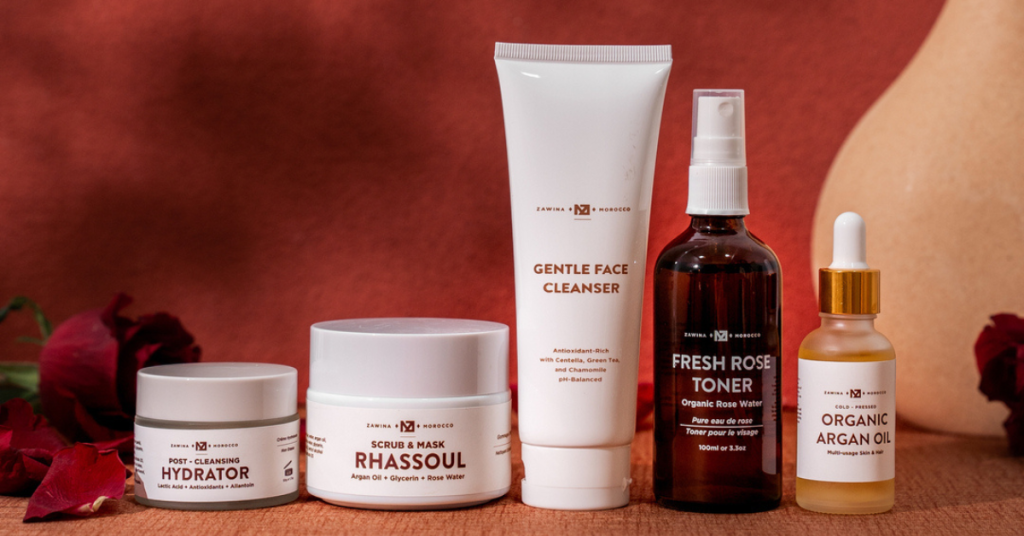
Embracing her roots and traditions
Having studied business management in university, Camilia was quite familiar with the basics of starting a business. But still, nothing could have prepared her for her first entrepreneurial venture.
She had migrated to different countries a few times before and each time she felt a part of her was lost. “I missed my traditional Moroccan products,” Camilia said. Whether it was food or beauty-related, she yearned for a taste of home.
Then Camilia moved to Malaysia a few years ago when she wedded her Malaysian husband.
As newlyweds, it was an interesting transition for Camilia. But she soon felt the same feeling creeping up that signalled her time away from Morocco.
“When I came to Malaysia, I realised that there is no Moroccan community here and it felt really lonely,” she recalled. It’s a feeling that most expats would share when they’re part of the minority group in their host country.
Yet, over time, things got better. She made new friends and invited them to have a peek into her culture. And they loved it despite its unfamiliarity.
So Camilia took it as her cue to launch a business that’s closer to home.
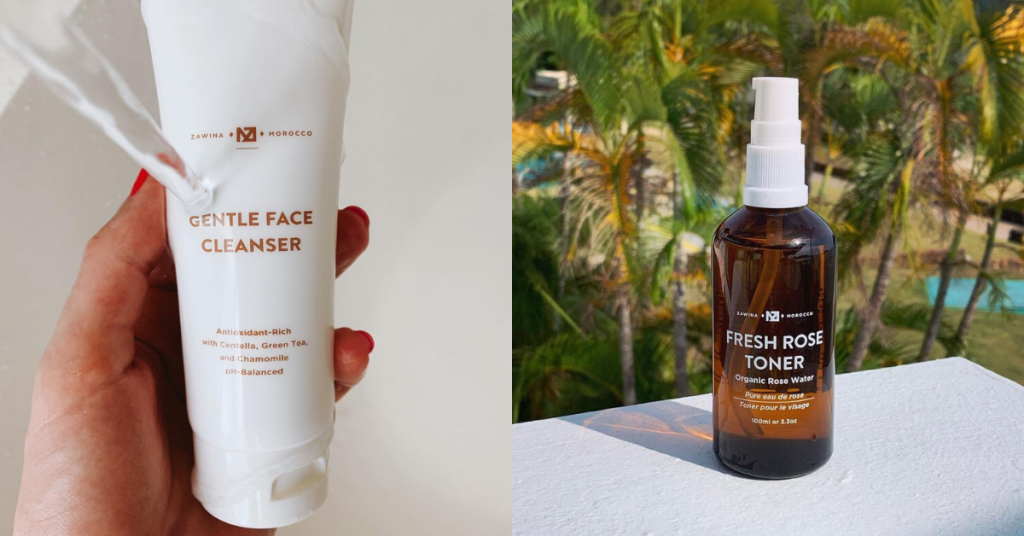
The bittersweet feeling of home
In sharing her traditional beauty rituals with Malaysians, Camilia explained to Vulcan Post that her brand offers products that are organic, minimalist, and have been around “for centuries”.
One of Zawina Morocco’s more popular products is the Pure Organic Argan Oil which retails at RM80 for 30ml.
They’re sold at selected pharmacies and stores, like Wellcome Pharmacy at PJ and Dressing Paula at MidValley MegaMall. Their full list of stockists is listed on their website here.
Other companies that sell argan oil in Malaysia include Melvita (RM145 for 50ml), The Ordinary (RM93 for 30ml), and Remedy (RM75 for 30ml).
Camilia explained that all of Zawina Morocco’s face oils are pure, cold pressed, and unrefined. What this means is no heat was used during the oil extraction process, which helps to preserve the nutrients.
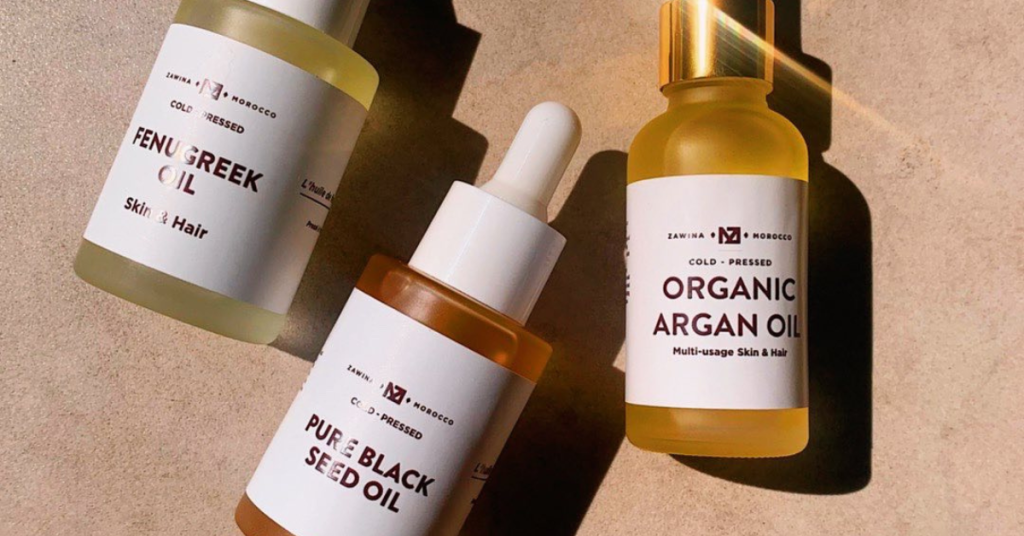
“[This] allows our customers to get the maximum benefits,” she said. “Nowadays, most of the face oils you see from other brands are refined, because it’s cheaper to manufacture and the lifespan of the oil becomes much longer.”
Zawina Morocco works with accredited farmers and labs in Morocco that help translate her visions of the products using “ancient Moroccan recipes”. Thus, the formulations are developed and overseen by Camilia herself.
They also obtain the necessary skincare accreditations and quality assurances for product development and manufacturing.
It’s only after getting a seal of approval from Camilia and the necessary authorisations that Zawina Morocco’s products are shipped here, to Malaysia.
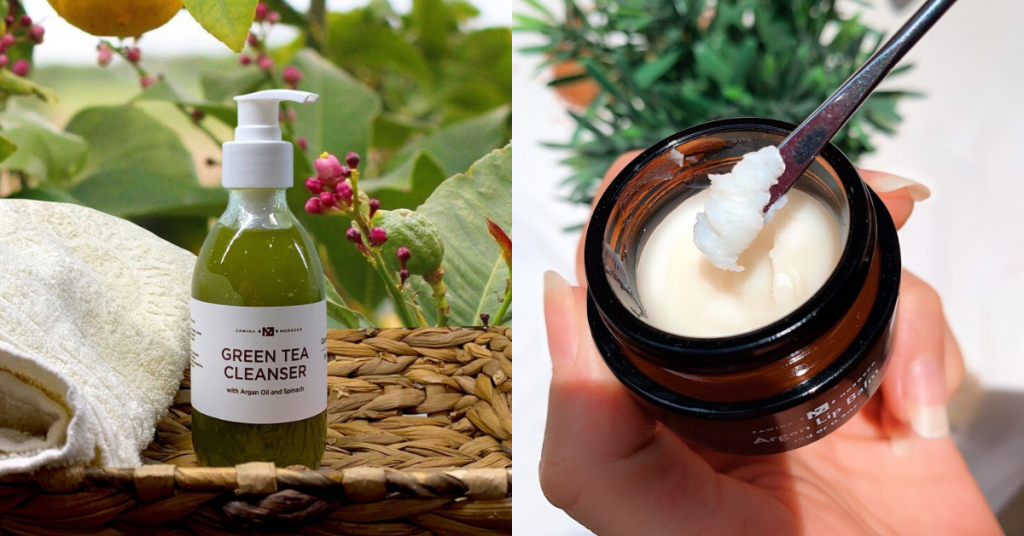
Confidence is bred, not born
It’s challenging to start a beauty venture in a new country, especially with no entrepreneurial experience. But Camilia was fortunate enough to have the necessary exposure and connections.
Before committing to Zawina Morocco full time, she was working in the marble export field in Turkey. The knowledge gained from that career helped in importing the brand’s products from Morocco.
The argan farm that she partners with also happens to be a good family friend of hers. “The first time I visited it (the farm) was with my mother when I was 16,” she shared.
“My confidence [in running] my brand came to me with time. The more I committed to it, the more I saw beauty in what I do and the value that it brings to my customers.”
Of course, Camilia shared that she couldn’t have done it without her husband’s encouragement and support.
This goes to show that having a strong personal foundation and support actually aid in a business’ success.
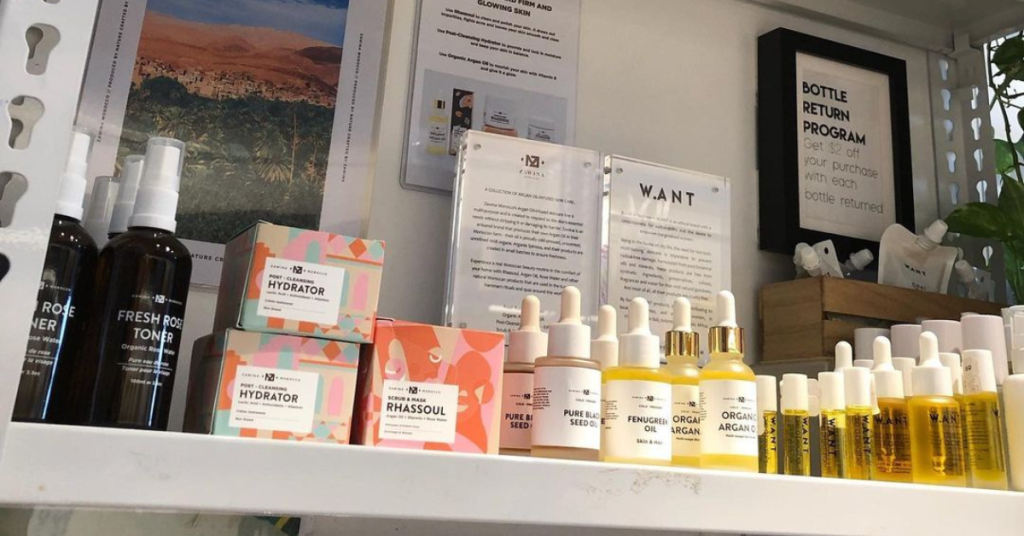
Paving her own skincare path
Despite running a small business in a large industry, she doesn’t believe that other brands in the market are her competitors.
“I don’t see it that way. I believe that each brand can bring its own unique value and experience,” Camilia said. One way she sets her brand apart is by sharing Moroccan routines and beauty ritual practices on Zawina Morocco’s Instagram page.
This lends her brand more credibility, seeing as this knowledge is being shared by Camilia, who’s Moroccan herself.
She states that Zawina Morocco’s goal is to transport customers to Morocco through their earthy and spa-like products. Personally, I’ve tried their Rhassoul Scrub & Mask and it does feel therapeutic when applied.
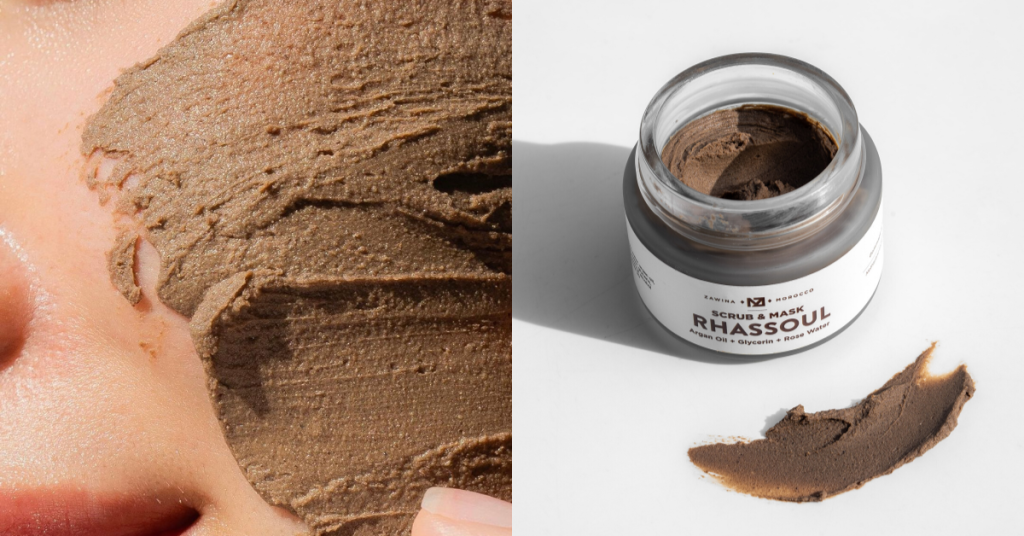
The brand currently carries seven products, but there will be new items released somewhere this year. “One of them will be our first product for body care,” Camilia affirmed.
When speaking about Zawina Morocco’s long-term plans, she also teased the brand’s future expansion into the field of makeup.
So who knows? You might see more Moroccan products like the viral Aker Fassi, a traditional lip stain that has recently been gaining traction online, making their way here.
- Learn more about Zawina Morocco here.
- Read other articles we’ve written about Malaysian startups here.
Also Read: ZCOVA expands to offer lab-grown diamonds with a message that “if you want it, then get it”
Featured Image Credit: Zawina Morocco
“It’s easier to be a content creator in S’pore”: Sneaky Sushii reveals life as local YouTuber
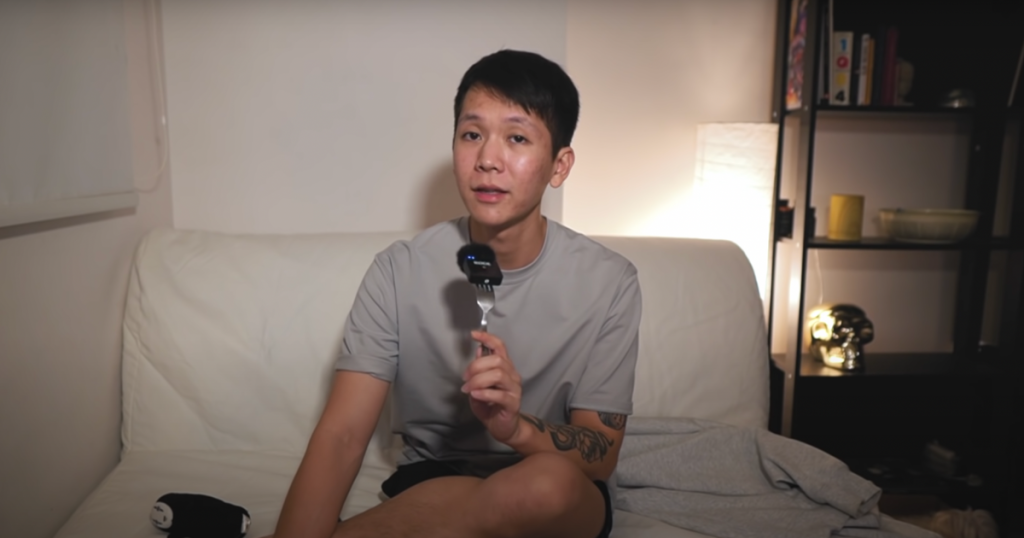
Content creation has captured the desires of people around the world. Especially among younger generations — millennials and Gen Zs — the influencer lifestyle seems to have far more appeal than a corporate job.
As of April 2022, 67 per cent of Singaporeans between the ages of 16 and 24 were creating online content. Whether it’s photography, music, dance, or even vlogs capturing everyday life, there are endless niches today, for people to discover and become a part of.
With the emergence of platforms such as TikTok and the rise of short-form videos, content creation has become more accessible than ever before. The creator economy has been rapidly growing, and for many companies, influencer marketing is no longer an experiment — it’s essential.
That being said, what does it really take to succeed (read: make a full-time living) as a content creator in Singapore? We spoke to Jay — more commonly known by his YouTube handle, Sneaky Sushii — to find out more.
Becoming a YouTuber in Singapore
Unlike many others in his shoes, Jay’s rise to YouTube fame was surprisingly fast.
In July 2018, he posted his first video — a short film created entirely out of footage from the video game Fortnite. A few more followed and in just six months, there were 100,000 subscribers waiting for Jay’s next upload.
It could’ve been the top-notch editing, the well-told stories, or Fortnite’s immense popularity — either way, Jay found the confidence he needed to put all his efforts into a YouTube career.
“The channel sort of blew up and I thought, ‘I can probably make a living off of this’,” he explained.
Midway through 2019, Jay’s videos were getting millions of views. However, after a year of creating short films, he’d grown bored of the game itself. He decided to shift niches and under a new moniker, Sneaky Sushii, he began offering up a blend of comedy and social commentary.
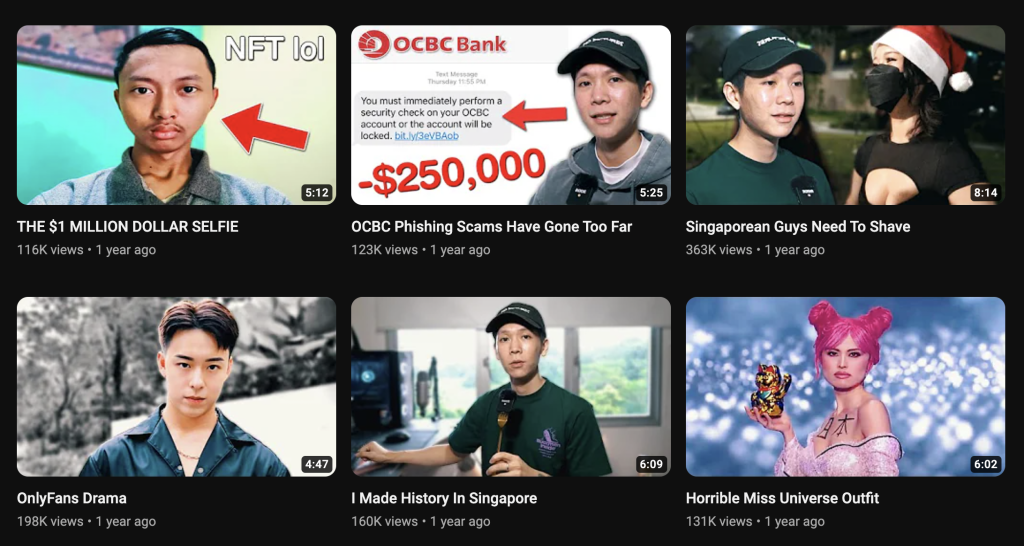
I got bored of Fortnite and decided to enter the Singapore YouTube market. Back then, I thought the YouTube scene in Singapore was trash and felt I could probably provide some value to Singaporeans. That’s where I am today.
– Jay, also known as Sneaky Sushii
Today, Sneaky Sushii has over 380,000 subscribers (and counting). Along with this, Jay also posts content on second channel, Sneakier Sushii — with 53,000 subscribers — and hosts livestreams on Twitch every Thursday.
What makes Singapore’s YouTube scene stand out
While his Fortnite content was geared towards viewers from around the world, Jay’s videos as Sneaky Sushii have a heavier Singaporean focus. In the past, he has shared his views on local brands, influencers, and trending news stories.
Targeting a Singapore audience comes with benefits and drawbacks. On one hand, Jay believes that as compared to countries like the US, it’s easier to draw in Singaporean viewers.
Singapore is so tiny and concentrated that all you need is one viral video to [gain the attention of the masses]. Maintaining your relevancy is another issue but I’d say — as long as you’re targeting the local demographic — it’s easier to be a content creator in Singapore.
– Jay, also known as Sneaky Sushii
On the flip side, when creating for a Singaporean audience, there’s also a tight ceiling on maximum viewership. This impacts the amount which creators can directly earn from YouTube.
“The method of earning money is very different from US creators. In Singapore, the money is in getting sponsors and brand deals,” he explained. In other countries — with bigger populations — creators can build up enough of a following to earn a substantial amount from their views alone.
“I guess that’s why most content creators in Singapore default to ‘selling out’ and [promoting brands in all of their content]. Either that, or they just stop doing YouTube because you can’t survive solely off of your views,” he added.
Reaching a global audience
Despite the current focus of his content, Jay hopes to expand his audience in the future. This is particularly important for him as his unfiltered style often shuts him out from brand deals.
I make a lot of [inappropriate] jokes and I try to be as authentic as possible, which limits the brands that I can work with. I want to reach a global audience and get more viewers so I can be as independent as possible, without having [to rely on] too many sponsors.
– Jay, also known as Sneaky Sushii
Jay acknowledges that this comes with its own challenges. He has to look, not only at the content he creates, but at the way in which it’s delivered.
“Maybe it’s just my subconscious inferiority complex, but as a Singaporean, I’m not super proud of the way I speak. This may or may not affect how my content is perceived by a global audience,” he said.
Jay clarifies that he’s immensely proud to be a Singaporean and loves the country, however, in his attempt to reach a global audience, the accent may be holding him back.
“I find myself speaking more eloquently and enunciating my words more. Perhaps, this is a good thing, but I risk sounding inauthentic, like someone who picked up a British accent just because they went on exchange for six months.”
A YouTuber’s work-life balance
From the outside, the influencer lifestyle can seem like a breeze. However, there’s a lot of work which goes into creating content on a daily basis.
“I’m definitely working more than someone would in a traditional nine-to-five job,” he admitted.
As far as work-life balance goes, he argues that it comes down to having fun with what he does.
Work-life balance is quite a myth isn’t it? What if you really enjoy what you do and obsess over it every day? To others, it may seem like you’re overworking yourself, but to you it’s not really work. I find [YouTube] fun — for the most part — so I’m just going to keep doing that.
– Jay, also known as Sneaky Sushii
That being said, Jay acknowledges that, even though he loves the job, it’s not always smooth-sailing.
“Burnout is a real thing,” he said. “Especially when you start becoming too hard on yourself and expecting every video to do better than the last. I’ve learnt to let that go though, so it’s much better now.”
Featured Image Credit: Sneaky Sushii
Also Read: Few cents for 2-hour livestream: TikTokers say monetising content not viable unless sponsored

